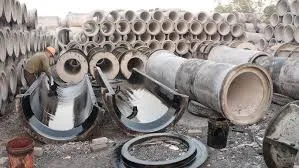Νοέ . 06, 2024 17:14 Back to list
Understanding the Melting Process of Aluminum and Its Industrial Applications
Understanding Aluminum Melting A Key Process in Metallurgy
Aluminum, with its lightweight and corrosion-resistant properties, has become one of the most widely used metals in various industries, from aerospace and automotive to packaging and construction. A fundamental process in the production and application of aluminum is melting, which transforms solid aluminum into a molten state for casting, shaping, and alloying. This article explores the science of aluminum melting, its applications, and the advancements in melting technologies.
The Science of Aluminum Melting
Aluminum has a relatively low melting point of around 660 degrees Celsius (1220 degrees Fahrenheit). This characteristic makes it an ideal metal for various applications, as it can be easily melted and reshaped. The melting process involves heating aluminum billets or scrap in a furnace until they reach this temperature. When aluminum melts, its crystalline structure breaks down, allowing it to flow into molds or to be mixed with other elements to form alloys.
The melting process can be influenced by several factors, including the purity of the aluminum, the presence of alloying elements, and the method used for melting. Pure aluminum is preferred in many applications due to its higher conductivity and resistance to corrosion. However, alloying elements such as copper, silicon, or magnesium can be added to enhance specific properties, such as strength or hardness.
Melting Technologies
Several technologies are used to melt aluminum, each with its advantages and disadvantages. The most common methods include
1. Induction Furnaces These furnaces use electromagnetic induction to heat aluminum. They are highly efficient, allowing for precise temperature control and rapid melting. This makes them popular in both small-scale and industrial applications.
2. Resistance Furnaces These rely on electrical resistance to generate heat. Though less energy-efficient than induction furnaces, they are often used for smaller operations or specialized applications.
aluminum melts

3. Reverberatory Furnaces Traditionally used in larger foundries, these furnaces involve heating aluminum in a chamber with a reflective surface. While effective for high-volume output, they tend to consume more energy.
4. Electric Arc Furnaces Often used for recycling scrap aluminum, these furnaces use electric arcs to generate the necessary heat. They are known for their efficiency and ability to handle a wide range of scrap materials.
Applications of Melted Aluminum
Once aluminum has been melted, it can be poured into molds to create a variety of products. This casting process is used in manufacturing components such as engine blocks, aircraft parts, and consumer goods. The ability to shape aluminum into complex designs while maintaining its properties is crucial for modern engineering.
Moreover, melted aluminum can be alloyed with various elements to enhance its properties for specific applications. For instance, the addition of silicon can improve castability, while copper can increase strength and hardness. This versatility allows manufacturers to tailor aluminum products to meet the demanding requirements of various industries.
Environmental Considerations
The melting of aluminum also raises important environmental considerations. The process requires significant amounts of energy, which can lead to higher carbon emissions if derived from non-renewable sources. However, aluminum is 100% recyclable without losing its properties, making recycling an attractive option. The recycling of aluminum typically requires only about 5% of the energy used in primary aluminum production, thereby reducing its environmental impact significantly.
Conclusion
Understanding the melting of aluminum is crucial given its significance in various sectors. This process not only impacts the production of high-quality aluminum products but also touches on broader themes of energy consumption and environmental responsibility. As technology continues to advance, more efficient and sustainable methods for melting aluminum are likely to emerge. By optimizing this critical process, we can improve the utilization of aluminum while minimizing its environmental footprint, paving the way for a more sustainable future in metallurgy and manufacturing.
-
Durable Cast Steel Concrete Pipe Mold Bottom Rings & Base Trays
NewsAug.23,2025
-
Centrifugally Cast Iron Water Main Pipe for Reliable Mains
NewsAug.22,2025
-
Durable Centrifugally Cast Iron Water Main Pipe
NewsAug.11,2025
-
Centrifugally Cast Iron Water Main Pipes for Reliability
NewsAug.10,2025
-
High-Quality Centrifugally Cast Iron Water Main Pipes
NewsAug.09,2025
-
Durable Cast Iron Water Main Pipe & Drainage Solutions
NewsAug.08,2025


